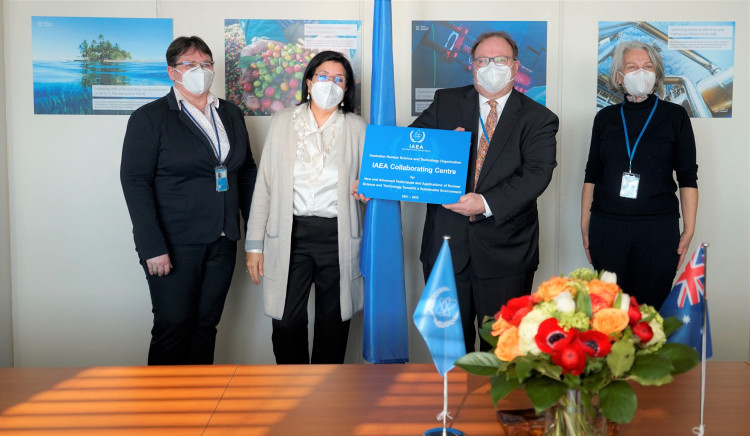The IAEA and the Australian Nuclear Science and Technology Organisation (ANSTO) have agreed to carry out joint work on enhancing the use of advanced nuclear technologies, including isotopic, accelerator- and research reactor-based techniques, to respond to recent environmental challenges and contribute to a sustainable environment.
With a new agreement signed this week, the Agency has redesignated ANSTO as an IAEA Collaborating Centre until 2025, under which the two organizations will implement joint research programmes in areas such as groundwater, marine environment and air pollution.
Joint activities will also cover provenance and authentication of illicit trade goods and objects, as well as natural and cultural heritage. By applying nuclear techniques, scientists can analyse the composition of cultural and natural heritage objects and can determine how and when they were created.
“The role of nuclear technologies in mitigating and adapting to climate change is becoming increasingly important,” said Najat Mokhtar, IAEA Deputy Director General and Head of the Department of Nuclear Sciences and Applications, at the signing ceremony of the new agreement on 8 March. “Both institutions have been working on climate change issues and we hope we can have the opportunity to share them in Glasgow,” she said, referring to the United Nations Climate Change Conference COP26 to be held in November 2021.
Suzanne Hollins, Head of Research, Nuclear Science and Technology at ANSTO, added: “ANSTO has a long-standing collaboration with the IAEA and the new topic of our agreement gives many opportunities ahead, covering most of the Unites Nations Sustainable Development Goals.” Hollins is also the Chairperson of the Agency’s Standing Advisory Group for Nuclear Applications (SAGNA), which gives recommendations directly to IAEA Director General.
Nuclear technologies can contribute to a sustainable environment in numerous ways. By exploring materials down to the atomic level, experts can study the climate from the past and the present to help understand climate change, investigate the variability of greenhouse gasses and establish new materials for green technologies, such as photovoltaic cells.
Isotopic dating, for example, is applied to analyse climate change archives, such as corals and lake sediments, to provide data on how the environment has responded to climate changes. This information is important to understand the occurrence of harmful algal blooms, increased coastal pollution and changing rainfall patterns, among other natural phenomena. Other nuclear techniques, such as ion beam analysis, are used, for example, to trace the source of air pollution by examining the elemental composition of tiny atmospheric aerosol particles with a size up to 10 micrometers, which can travel down to people’s lungs and are dangerous for human health.
The two organizations will also join forces to boost the use of nuclear techniques in water resources management by using isotopic tools to study key water quality issues in different regions. The joint research programmes will look at isotopic data to understand the interactions between surface and groundwater, which can be applied to optimize policies and strategies for a sustainable water resources management. This data will also be used to update IAEA global water isotope databases, such as the Global Network of Isotopes in Precipitation (GNIP).
ANSTO has been an IAEA Collaborating Centre for more than a decade and has supported Agency activities mainly in neutron activation analysis and neutron scattering research. The new collaboration focusing on sustainable environment reflects the programmatic priorities of both organizations.
Working towards gender parity
There are many areas the Agency and ANSTO work on outside the scope of this agreement, including both organizations’ commitment to achieving gender equity and encouraging women to undertake careers in STEM. In 2020, the two organizations hosted a virtual two-week training course for 59 female educators across Asia and the Pacific region on how to communicate on topics related to nuclear science and technology. A recent IAEA webinar encouraging women for careers in accelerator science and technology also featured Ceri Brenner, Leader of ANSTO’s Centre for Accelerator Science. The recording of the webinar is available here.
“On today’s International Women’s Day, it is important to celebrate the progress that has been made in gender equality in nuclear sciences and applications,” said Shaun Jenkinson, ANSTO’s CEO, at the signing ceremony. “But we should be also intolerant to the slow speed of change in some areas and acknowledge that there is still much work to be done.”
ANSTO has a long-standing collaboration with the IAEA and the new topic of our agreement gives many opportunities ahead, covering most of the Unites Nations Sustainable Development Goals.







